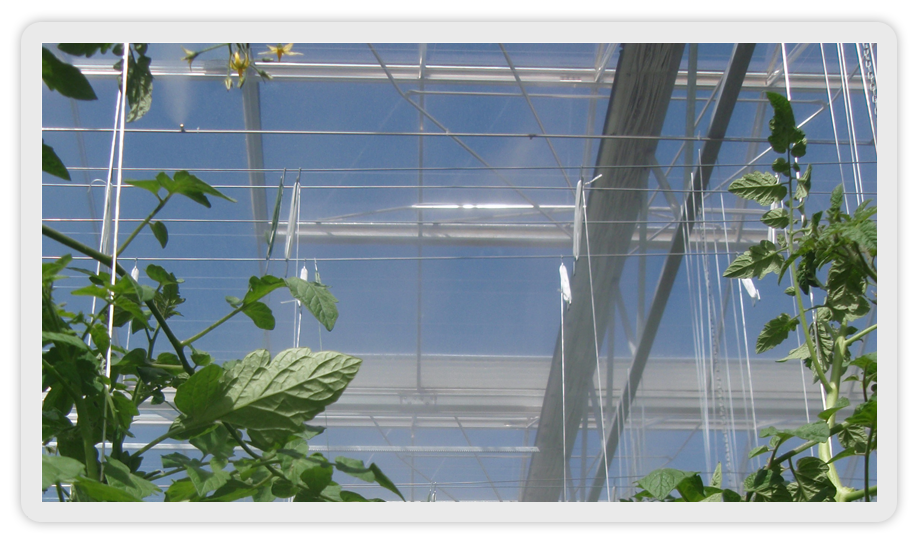Is your greenhouse flourishing? How can you know if the environmental conditions in your greenhouse are optimized for maximum growth? What solutions exist for controlling these conditions? Growers regard these considerations as fundamental to the success of their greenhouse crops.
How plants use water
Plants use water in four essential ways: through structure, photosynthesis, translocation, and transpiration. Structurally, plants are made up of as much as 95% water. Plants have neither skeletons nor carapaces to provide for their rigidity. Rather, “the majority of plants get it solely from the pressure of the water in their cells,” says the Open Permaculture School – Regenerative Leadership Institute. “Photosynthesis uses the energy from the sun to create energy in the form of sugars,” says OPS, “For the molecules of sugar to form they need carbon dioxide (which they absorb from the air) and hydrogen, which is sourced from the water in the plant.”
Translocation is the process by which plants move water up from their roots through to their various parts, and with it, the nutrients they need to survive.
Transpiration on the other hand, serves the essential purpose of cooling the plant. It is the process of evaporation of water from the surface of the leaves. “This occurs when stomata, a kind of pore, open on the leaf to allow for the exchange of oxygen and carbon dioxide with the atmosphere during photosynthesis,” OPS says.
Relative humidity and plants
Relative humidity (RH) is affected by temperature. The higher the temperature of the air, the more moisture it can hold. Higher RH slows the process of transpiration, allowing plants to focus their energy more on photosynthesis and growth, rather than cooling. Rapid changes to atmospheric conditions, RH in particular, can cause tissue damage to plants because they cannot adapt their processes quickly enough to compensate. This can occur with as little as a 20% change in RH levels if it occurs fast enough. Ensuring that changes to the RH in the environment occur slowly is essential to successful greenhouse farming.
Controlling relative humidity
Growers can deploy a system of ventilation and heating to lower the RH in their greenhouses, while coolers, misting systems, and/or sprinklers can be used to raise it. The best solution, ultimately, is to install a control system that can both track and adjust the RH within the greenhouse environment.
MicroCool’s advanced fogging technology creates and maintains the conditions plants need to achieve their maximum potential. We work with growers everywhere to help create the perfect greenhouse environment for every kind of crop, in every kind of climate.
We can create a MicroCool Evaporative Fog Solution for your greenhouse operation, keep exploring our website or get in touch with one of friendly experts today!
Contact us for a free quote.
phone. 1-800-322-4364 or 1-760-322-1111 | email. fog at microcool.com

